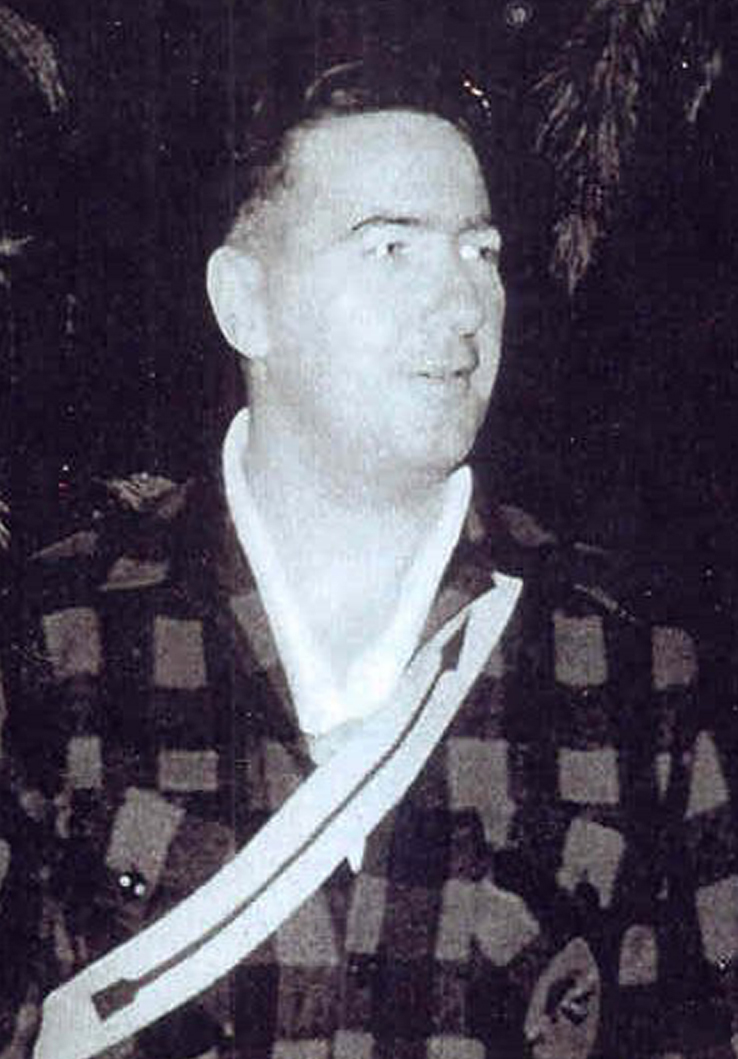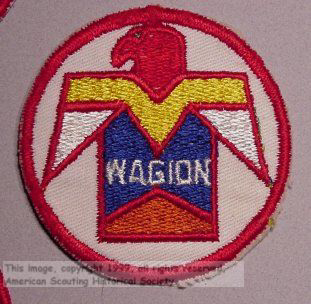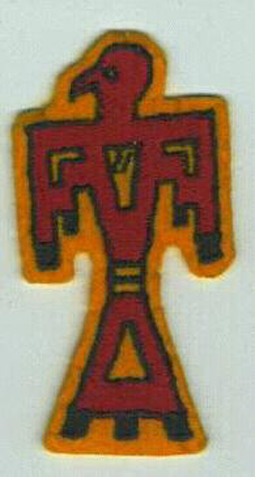Non-OA Camp Fraternities
At one time the Order of the Arrow, or more appropriately Wimachtendienk W.W., was only one of numerous fraternal camp societies established all across the country at local Scout camps . During the earliest years of Scouting other fraternal programs developed such as Firecrafters, Ku-Ni-eh and Tribe of Gimogash. Like Wimachtendienk, these programs often spread from council to council and camp to camp becoming multi-council programs. Gimogash started by one time Kansas City and longtime Toledo Scout Executive J. St. Clair Mendenhall actually began in 1914, one year before Wimachtendienk. Gimogash for years existed in more local councils than the Order. However, Gimogash’s rule against having a national organization impeded their growth. These other fraternal programs have often been labeled Pre-OA societies. While it is true that many of these groups preceded OA in their councils, others co-existed with OA and often competed or created political divides.
In many cases a local council camp fraternity applied for the equivalent of a national charter for their local society by seeking charter from the OA. Groups like the Tribe of Gorgonio from Orange Empire Council, Santa Ana, California and Tribe of Yosemite, Yosemite Area Council, Modesto, California applied to become OA lodges. These societies provided the same significance to their brethren as Wimachtendienk held for its members. After receiving their WWW charter all of the members were immediately recognized as Arrowmen in a single ceremony without further ordeal. They became San Gorgonio Lodge and Yosemite Lodge in the Order.
Other groups existed at Scout camps that eventually succumbed to more popular programs. National Capital Area Council used Clan of the Mystic Oak (CMO) for decades before changing over to the OA. Many of these groups only changed to OA after the OA was fully integrated into the BSA in 1948 as the official Scout honor society. Likewise the Tribe of Papago at Camp Lawton in Tuscon, Arizona eventually became OA. They kept the name Tribe of Papago at camp, but instead of serving as the camp honor society it became a conservation group open to all campers.
Unfortunately, not all of these early fraternal societies were based upon the strong values of Scouting and the high ideals of the Order. While E. Urner Goodman always insisted on democratic principles and boasted that the Order’s first constitution was signed at Independence Hall in Philadelphia, some societies utilized ignorant and hateful methods. Some societies used blackballing, a method whereby any single member could unilaterally block admission to membership of a potential nominee for any reason or no reason at all. This was to keep so called “undesirables” out, but in practice it was used to keep out people of color or the “wrong” religion. Local Scout honor societies practicing such abhorrent practices were by no means the majority of them, they were however the greatest cause of concern.
Some groups were so overtly racist that they stated it in their secret by-laws. One such group was the Pathfinders of the Golden Trail (PGT) which existed at one time in Jacksonville, Florida among other councils. The PGT ran by Jacksonville Council Scout Executive A. S. MacFarlane incorporated into their by-laws and secret rituals white supremacist principles as the basis of their society. This type of clandestine society was precisely the type of group that caused the Order to be threatened.
Some Scout professionals believed that the root of the evil was in the secrecy of the societies and that no secretive or fraternal groups should be allowed to exist in Scouting and in its camps. Many professionals of this opinion were part of the BSA Camp Commission that presented a dire report on camp fraternities at the 1922 Scout Executives Conference at the Blue Ridge Assembly near Asheville, North Carolina. The main thrust of Goodman and Edson’s plea at that meeting was that the BSA ought not cast aside what works and is in keeping with Scouting principles and is helpful to the council and the lives of young men for the purpose of stopping those other groups lacking in integrity. The motion was amended to discourage groups not based on Scout ideals. Part of the outcome was groups like Wimachtendienk, W.W., Ku-Ni-Eh and Tribe of Gimogash became experimental BSA societies.
Chief Scout Executive James E. West had to know that groups not in keeping with Scouting’s values existed, were deeply embedded and that merely stating policy that societies not adhering to Scout principles would be banned would be insufficient (the BSA did ship A.S. MacFarlane off as far as possible; he became the first Scout Executive of Philippines Council in Manila circa 1924). Instead West observed Goodman developing as a professional and he watched WWW grow on its own merits.
The final solution for the BSA was to embrace the Order of the Arrow in 1934 as an official Scout program and to make the OA the official BSA honor society in 1948. This process extinguished almost all other camp fraternities including any that employed inappropriate practices replacing them with the high ideals of the OA. Eventually all but a small handful of local groups (Tribe of Tahquitz, Mic-o-Say and Firecrafters) went extinct. One by one local honor societies joined Scouting’s national honor society or died out as their council embraced OA. One consequence was Scouting lost the local traditions unique to some of these special societies. All that remains of some of these groups are a few badges and pins.

 e than two decades.
e than two decades.






